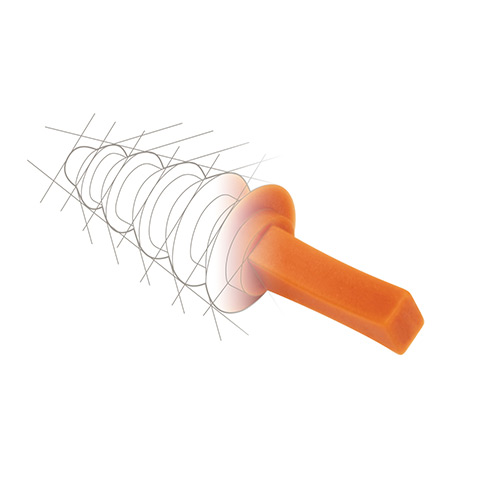As global supply chains continue to face complications companies must re-think strategies to meet demand while minimizing unnecessary costs.
By John D. Gill
Preventing product damage can be a significant source of savings. The solution is well-designed product protection.
“Are we in a recession yet?”
That question swirled around companies for much of 2022 as they juggled inflation, worker shortages, increasing shipping costs and persistent supply chain hurdles. Looking ahead to 2023, it still looms large. Already, companies continue to struggle in managing quality assurance, securing inventory, and scaling up to meet demands and tight lead times. So, whether leadership is bracing for a recession or just playing it safe in a less predictable marketplace, one thing is clear: safeguarding against unnecessary cost is a priority.
Inadequate product protection can lead to sunk cost from product damage, loss and, ultimately, failure at the end-use stage. Additionally, product damage can erode consumer confidence and disrupt brand loyalty and, as a result, profitability.
For many companies, mounting costs from product damage is the last thing they need. This is especially true for parts manufacturers across the automotive, aviation, electronics and healthcare sectors that have navigated multiple years of logistical issues and shortages. However, these companies can leverage key insights and advanced solutions to design more intentional product protection that can better weather the more challenging supply chain conditions to optimize product appearance and protective product performance.
One way to eliminate unnecessary cost is to proactively mitigate product waste and associated expenses with more effective product protection. Recently, Caplugs brought together its experts to host on-demand webinar, “Designing Product Protection for Greater Supply Chain Agility + ROI,” on the new Caplugs Connect. There, we shared some critical ways to design product protection with a more strategic, proactive and diversified approach that can prevent instances of product damage. Here are some important takeaways:
1. Thoroughly assess the demands of your supply chain.
When designing any type of product protection – whether it’s a masking tape for a finishing process or a cover to prevent damage in transit – there are a wide range of factors to consider. Companies should encourage their design engineers to work closely with suppliers in assessing the many critical demands and challenges of their supply chain before specifying any product protection material or design choices. Important considerations include environmental factors, stress, functionality, production costs, timing, volume and chemical or sunlight exposure.

2. Don’t forget to design for manufacturability.
When we think of product protection, our thoughts can go immediately to protection in transit. However, it’s also important to also consider criteria for manufacturability. Caplugs subscribes to a Design for Manufacturability (DFM) philosophy to identify prospective design issues that can lead to inconsistency, poor tolerance matching and molding issues that could cause surface defects, short-fills and product weakness. By using finite element analysis, one can efficiently assess failure prediction, deflection, and stress of a product so that it can perform as intended. These assessments ensure company needs for high precision and tight tolerances are met, minimizing instances of product protection inadequacies, failure and the resulting costs.
3. Design for ease of use.
Since many manufacturers have struggled with staffing issues, ensuring that product protection solutions are easy and intuitive to handle is important to minimizing required labor. For example, if a part is shaped in a way that makes application and removal of an off-the-shelf masking cap for a coating process difficult, that ill-fitted part could increase the likelihood of misapplication, causing the item to fail quality assessment. What results is not only wasted time, money and labor, but potentially employee frustration and delays in meeting quotas. In this instance, a better solution may be a custom-designed and molded masking cap that fits snugly but can be quickly and easily applied and removed with a built-in tab. This simple change to approaching product protection design can minimize labor, wasted product, unexpected cost – and prevent unnecessary employee frustration.
4. Collaborate to stabilize inventory.
If the past few years have taught companies anything, it’s the need to work smarter by anticipating and alleviating disruptions within supply chains. Manufacturers must lean on suppliers to identify creative solutions that can help them navigate material shortages and increased order volumes. This close collaboration can ensure disruptions don’t threaten manufacturer commitments down the road.
Overall, anticipating and designing product protection to address a wider criterion of demands can better equip companies to smoothly navigate a less predictable supply chain conditions. Companies should encourage their design engineers and other specifiers to consider the above factors in an effort to minimize product damage and unexpected costs – no matter what lies ahead in 2023.
About the Author
John D. Gill is an International Sales Engineer with Caplugs. Gill has 18 years of experience in designing masking solutions for a wide range of markets and customers. Working with international customers, he also supports Caplugs’ sales team in Europe. Gill is passionate about ensuring people understand the technical aspects of masking design and production. His work is centered on making the masking process easier and more consistent for every surface finishing company. When he is not traveling, Gill can be found on a small island off the west coast of Scotland.
Scott Ellyson, CEO of East West Manufacturing, brings decades of global manufacturing and supply chain leadership to the conversation. In this episode, he shares practical insights on scaling operations, navigating complexity, and building resilient manufacturing networks in an increasingly connected world.